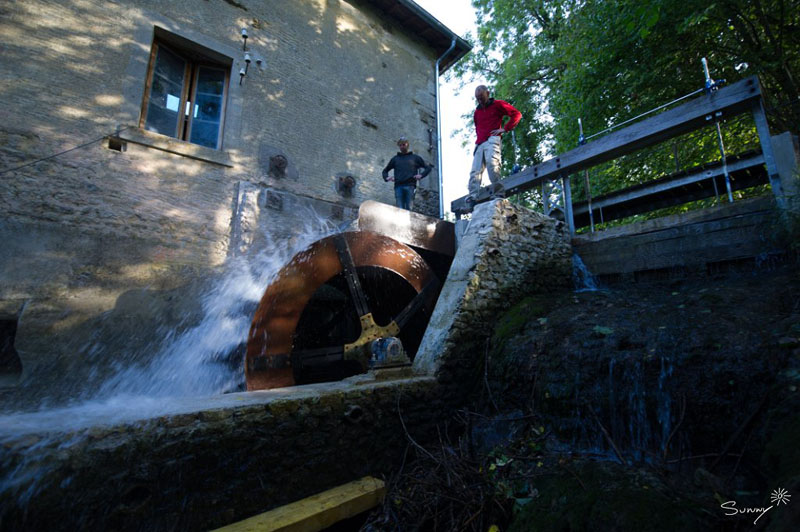LOUPPY SUR CHÉE

The mill at Louppy sur Chée (FR) was originally built as a grain mill in the 15th century. The mill had 16 stones for grinding different grains. In the 19th century the mill was converted to make small hand tools. Hydropower was used to power different machinery. When expansion was no longer possible at the end of the 19th century a hydropower turbine was installed, huge innovation for that time. Together with a serial generator, electricity was generated to run machines elsewhere. During the evening the installation generated electricity for houses in the village. Due to this Louppy sur Chée was one of the first villages in France with electricity.
Since 1930 the mill had been abandoned by the inhabitants as a result of flooding. A meter and a half of water in the kitchen, living and sleeping areas was just too much. In 1972 the lock drifted away in a big flood. The turbine and generator did their work with a sandbag lock until 1980. After that the mill was unused. The extensive availability of electricity from nuclear power has almost certainly played a significant role.
Restoration began in 2003. The mill as well as the house and garden have been brought back to life. First of all, the possibility of revising the existing turbine was looked into ,but this was not feasible. After that, installing a new turbine was considered. That turned out to be expensive and would have looked ugly with the turbine in a concrete container. In 2012 the choice was made to bring the mill back to it’s original state; two upper layer water wheels, with the power to generate 6kW each. Now one wheel works and the other one will do in due course.
Each wheel delivers power to an industrial gearbox which increases revolutions so it is suitable for a generator. Via a belt drive the generator is powered. The electrical energy can be used straight away for heating or as a convertor to convert in 3 phases alternating current of 400 V.
People from the surrounding area respond with disbelief and admiration that the old mill has been brought back to life. As well as economic yield is the restoration of historical heritage a contribution to society that is highly appreciated.